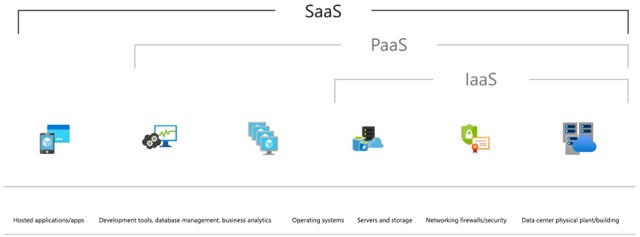Table of Contents
ToggleWhat is SaaS: A Complete Guide to Software as a Service
Description
This tech blog guide will cover what is Software as a Service (SaaS), including its definition, how it works, and its advantages. If you’re curious about SaaS and how it can benefit your business, this guide is for you.
Introduction
In cloud computing, there are three main models of cloud services: Software as a Service model, Infrastructure as a Service model, and Platform as a Service model. Software as a Service is the most commonly known and used cloud computing model. In this blog, we’ll focus on Software as a Service and understand what Software as a Service is, how it works, and its advantages/benefits for companies and users.
What is SaaS?
SaaS, or it’s called Software as a Service, is a cloud computing model that provides companies with access to software applications over the internet. Software as a Service allows users to access applications from any device with an internet connection without downloading or installing any software.
With Software as a Service, businesses can easily access software applications hosted in the cloud without investing in hardware or managing complex software infrastructure. Software as a Service allows companies to quickly and easily scale up their software needs and reduce the burden on IT teams.
E.g., Salesforce is one of the Software as a Service (SaaS example) applications that customer leverage for their CRM. Below is a reference image from Microsoft of the SaaS cloud computing model.
How Does SaaS Work?
Software as a Service providers host and maintain software applications in the cloud (local data centers), which users over the internet can access. Users can access the software applications through a web browser without downloading or installing any software on their devices.
SaaS providers offer a variety of applications, including email, customer relationship management (CRM), enterprise resource planning (ERP), and project management. Software as a Service provider also offers various services, including security, maintenance, and support, to ensure that applications are secure, stable, and available.
Advantages of SaaS
There are several advantages to using Software as a Service, which includes:
- Cost Savings: Software as a Service software companies eliminate the need for businesses to invest in hardware or manage complex software infrastructure. The overall process can result in significant cost savings and reduce IT teams’ burden.
- Accessibility: The software as a Service cloud model allows users to access software applications from any device with an internet connection, making it easy for remote workers and teams to collaborate.
- Scalability: Software as a Service allows businesses to scale their Software needs easily and quickly, depending on their changing needs.
- Customizability: Software as a Service offers businesses a customizable platform, allowing them to choose the applications and features that best fit their needs.
Popular SaaS B2B Providers
There are several Software as a Service providers in the market today, including:
- Microsoft Office 365
- Google Workspace
- Salesforce
- Zoom
- Dropbox
Each provider offers a range of applications and services and different pricing models. Evaluating each provider is essential to determine the best fit for your business.
FAQs
What’s the difference between SaaS, IaaS, and PaaS?
SaaS refers to cloud-based software applications, while IaaS provides businesses with virtualized computing resources over the internet. PaaS provides a platform to develop, test, and deploy applications online.
How secure is SaaS?
SaaS providers typically offer advanced security features and compliance certifications, ensuring that applications and data are safe and secure.
Can I use SaaS for any application?
Software as a Service suits various applications, including email, CRM, ERP, and project management.
How do I choose the right SaaS provider for my business?
It’s important to carefully evaluate each provider to determine the best fit for your business. Consider factors such as pricing, applications, features, and customer support.
Conclusion
SaaS is a cloud computing model that helps businesses access software applications over the internet without investing in hardware or managing complex software infrastructure. With Software as a Service, businesses can quickly and easily scale up their software needs and reduce the burden on IT teams. As you evaluate the benefits and features of Software as a Service, consider the popular providers in the market and decide the one that best fits your business needs.
Please provide your feedback and comments below.
Thank you!
Studioteck

